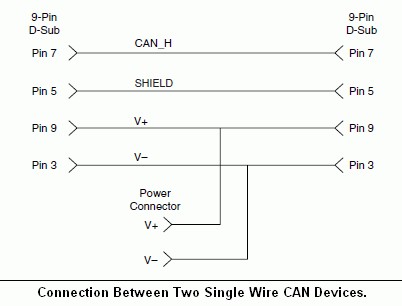By connecting can participants the characteristic impedance might change though.
Can bus cable impedance.
I have a can bus at 125 kbit s and the wire length is less than 60 1 5 m.
If you purchase beldon thick devicenet cable the blue and white wires have a characteristic impedance of 120 ohms at the frequencies that show up with can messaging.
Therefore you should use 120 î resistors for termination.
I have a requirement to add a module that has its own 120 ohm terminating.
Therefore the characteristic impedance of the line used should not be overvalued.
The impedance on the network is 60 ohms.
The wires are a twisted pair with a 120 ω nominal characteristic impedance.
Do these nodes need to have the same cable differential impedance as the main network bus.
Can bus data cables shielded sae j1939 11.
For higher speed busses or longer cables you want termination with cable impedance at both ends usually 120 ohm.
To prevent reflections the ends of the transmission line need to be terminated with that same value of 120 ohms.
The termination resistors on a cable should match the nominal impedance of the cable.
This is because communication flows both ways on the can bus.
Iso 11898 requires a cable with a nominal impedance of 120 î.
Can l is pin 2 and can h is pin 7 on the standard 9 pin d sub connector.
This bus uses differential wired and signals.
Characteristic impedance the characteristic impedance of the line used should be about 120.
The main cable should be terminated at both physical ends and the intermediary nodes that come from that cable should not be terminated.
This is to avoid unwanted data signal reflections.
The intermediary nodes that attach to the main network bus should be short in order not to disrupt the end to end characteristic impedance of the main network bus cable.
There are two points about can termination.
The bus needs a resistive parallel termination to realize the rezessive voltage level not necessarily 120 ohm.

